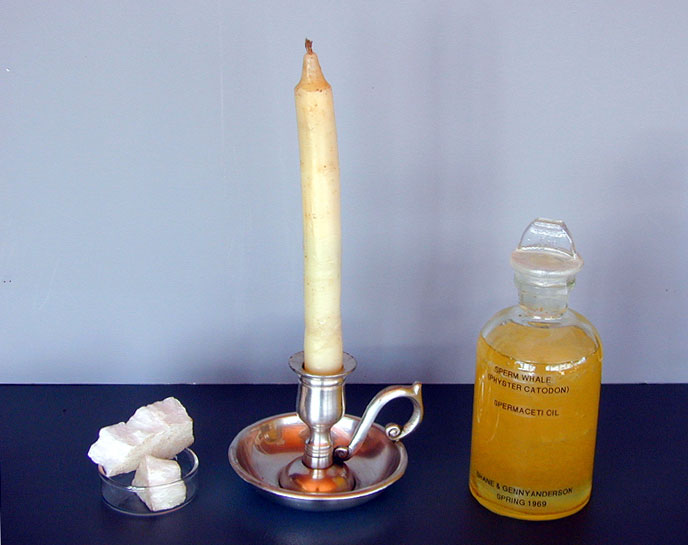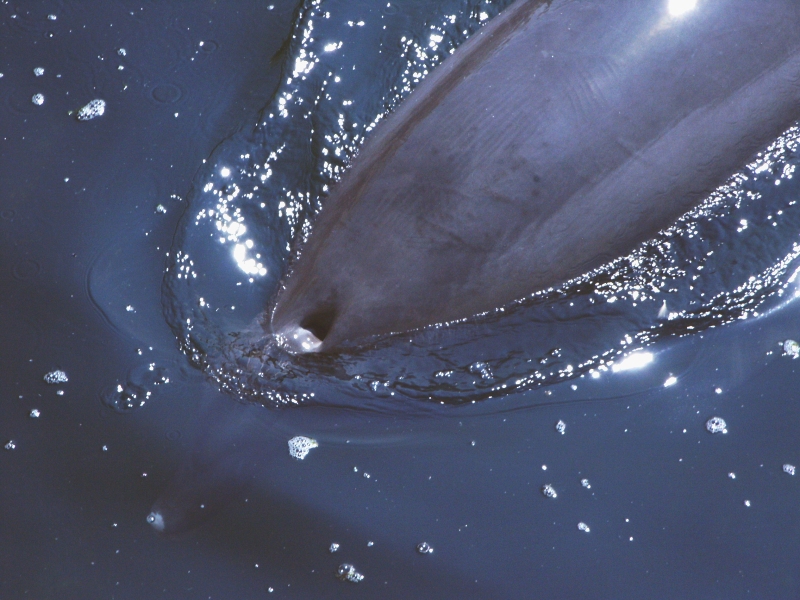|
Pygmy Sperm Whale
The pygmy sperm whale (''Kogia breviceps'') is one of two extant species in the family Kogiidae in the Physeteroidea, sperm whale superfamily. They are not often sighted at sea, and most of what is known about them comes from the examination of Cetacean stranding, stranded specimens. Taxonomy The pygmy sperm whale was first species description, described by naturalist Henri Marie Ducrotay de Blainville in 1838. He based this on the head of an individual washed up on the coasts of Audierne in France in 1784, which was then stored in the Muséum d'histoire naturelle. He recognized it as a type of Physeteroidea, sperm whale and assigned it to the same genus as the sperm whale (''Physeter macrocephalus'') as ''Physeter breviceps''. He noted its small size and nicknamed it "''cachalot a tête courte''"–small-headed sperm whale; further, the species name ''breviceps'' is Latin for "short-headed". In 1846, zoologist John Edward Gray erected the genus ''Kogia'' for the pygmy sperm wha ... [...More Info...] [...Related Items...] OR: [Wikipedia] [Google] [Baidu] |
Henri Marie Ducrotay De Blainville
Henri Marie Ducrotay de Blainville (; 12 September 1777 – 1 May 1850) was a French zoologist and anatomist. Life Blainville was born at Arques-la-Bataille, Arques, near Dieppe, Seine-Maritime, Dieppe. As a young man, he went to Paris to study art, but ultimately devoted himself to natural history. He attracted the attention of Georges Cuvier, for whom he occasionally substituted as lecturer at the Collège de France and at the Athenaeum Club, London. In 1812, he was aided by Cuvier in acquiring the position of assistant professor of anatomy and zoology in the Faculty of Sciences at Paris. Eventually, relations between the two men soured, a situation that ended in open enmity. In 1819, Blainville was elected a member of the American Philosophical Society in Philadelphia. In 1825, he was admitted a member of the French Academy of Sciences; and in 1830, he was appointed to succeed Jean-Baptiste Lamarck in the chair of natural history at the museum. Two years later, on the death of ... [...More Info...] [...Related Items...] OR: [Wikipedia] [Google] [Baidu] |
Theodore Gill
Theodore Nicholas Gill (March 21, 1837 – September 25, 1914) was an American ichthyologist, mammalogist, malacologist, and librarian. Career Born and educated in New York City under private tutors, Gill early showed interest in natural history. He was associated with J. Carson Brevoort in the arrangement of the latter's entomological and ichthyological collections before going to Washington, DC, in 1863 to work at the Smithsonian Institution. He catalogued mammals, fishes, and mollusks most particularly, although he maintained proficiency in other orders of animals. He was librarian at the Smithsonian and also senior assistant to the Library of Congress. He was elected as a member of the American Philosophical Society in 1867. Gill was professor of zoology at George Washington University. He was also a member of the Megatherium Club at the Smithsonian Institution in Washington, DC. Fellow members frequently mocked him for his vanity. He was president of the American Asso ... [...More Info...] [...Related Items...] OR: [Wikipedia] [Google] [Baidu] |
Vertebra
Each vertebra (: vertebrae) is an irregular bone with a complex structure composed of bone and some hyaline cartilage, that make up the vertebral column or spine, of vertebrates. The proportions of the vertebrae differ according to their spinal segment and the particular species. The basic configuration of a vertebra varies; the vertebral body (also ''centrum'') is of bone and bears the load of the vertebral column. The upper and lower surfaces of the vertebra body give attachment to the intervertebral discs. The posterior part of a vertebra forms a vertebral arch, in eleven parts, consisting of two pedicles (pedicle of vertebral arch), two laminae, and seven processes. The laminae give attachment to the ligamenta flava (ligaments of the spine). There are vertebral notches formed from the shape of the pedicles, which form the intervertebral foramina when the vertebrae articulate. These foramina are the entry and exit conduits for the spinal nerves. The body of the vertebr ... [...More Info...] [...Related Items...] OR: [Wikipedia] [Google] [Baidu] |
Spermaceti
Spermaceti (see also: Sperm oil) is a waxy substance found in the head cavities of the sperm whale (and, in smaller quantities, in the oils of other whales). Spermaceti is created in the spermaceti organ inside the whale's head. This organ may contain as much as of spermaceti. It has been extracted by whalers since the 17th century for human use in cosmetics, textiles, and candles. Theories for the spermaceti organ's biological function suggest that it may control buoyancy, act as a focusing apparatus for the whale's sense of echolocation, or possibly both. Concrete evidence supports both theories. The buoyancy theory holds that the sperm whale is capable of heating the spermaceti, lowering its density and thus allowing the whale to float; for the whale to sink again, it must take water into its blowhole, which cools the spermaceti into a denser solid. This claim has been called into question by recent research that indicates a lack of biological structures to support this h ... [...More Info...] [...Related Items...] OR: [Wikipedia] [Google] [Baidu] |
Dorsal Fin
A dorsal fin is a fin on the back of most marine and freshwater vertebrates. Dorsal fins have evolved independently several times through convergent evolution adapting to marine environments, so the fins are not all homologous. They are found in most fish, in mammals such as whales, and in extinct ancient marine reptiles such as ichthyosaurs. Most have only one dorsal fin, but some have two or three. Wildlife biologists often use the distinctive nicks and wear patterns which develop on the dorsal fins of whales to identify individuals in the field. The bones or cartilages that support the dorsal fin in fish are called pterygiophores. Functions The main purpose of the dorsal fin is usually to stabilize the animal against rolling and to assist in sudden turns. Some species have further adapted their dorsal fins to other uses. The sunfish uses the dorsal fin (and the anal fin Fins are moving appendages protruding from the body of fish that interact with water to ge ... [...More Info...] [...Related Items...] OR: [Wikipedia] [Google] [Baidu] |
Blowhole (anatomy)
In cetology, the study of whales and other cetaceans, a blowhole is the hole (or spiracle) at the top of the head through which the animal breathes air. In baleen whales, these are in pairs. It is homologous with the nostril of other mammals, and evolved via gradual movement of the nostrils to the top of the head. The posterior placement of blowholes on cetacean heads is believed to minimize the energy used when breathing at the water's surface. Purpose and mechanism Air sacs just below the blowhole allow whales to produce sounds for communication and, for toothed whales, echolocation. These air sacs are filled with air, which is then released again to produce sound in a similar fashion to releasing air from a balloon. When whales dive under water their nasal plug covers the nasal passage to the blowhole. The muscles controlling the nasal plug are relaxed during this time, but when the whale comes up for air these muscles contract and allow for the blowhole to be opened a ... [...More Info...] [...Related Items...] OR: [Wikipedia] [Google] [Baidu] |
Dolphin
A dolphin is an aquatic mammal in the cetacean clade Odontoceti (toothed whale). Dolphins belong to the families Delphinidae (the oceanic dolphins), Platanistidae (the Indian river dolphins), Iniidae (the New World river dolphins), Pontoporiidae (the brackish dolphins), and possibly extinct Lipotidae (baiji or Chinese river dolphin). There are 40 extant species named as dolphins. Dolphins range in size from the and Maui's dolphin to the and orca. Various species of dolphins exhibit sexual dimorphism where the males are larger than females. They have streamlined bodies and two limbs that are modified into flippers. Though not quite as flexible as Pinniped, seals, they are faster; some dolphins can briefly travel at speeds of or leap about . Dolphins use their conical teeth to capture fast-moving Predation, prey. They have well-developed hearing which is adapted for both air and water; it is so well developed that some can survive even if they are blind. Some species are w ... [...More Info...] [...Related Items...] OR: [Wikipedia] [Google] [Baidu] |
Pygmy Sperm Whale Skeleton
In anthropology, pygmy peoples are ethnic groups whose average height is unusually short. The term pygmyism is used to describe the phenotype of endemic short stature (as opposed to disproportionate dwarfism occurring in isolated cases in a population) for populations in which adult men are on average less than tall. Although the term is sometimes considered derogatory because it focuses on a physical trait, it remains the primary term associated with the African Pygmies, the hunter-gatherers of the Congo Basin (comprising the Bambenga, Bambuti and Batwa). The terms "Asiatic pygmies" and "Oceanic pygmies" have also been used to describe the Negrito populations of Southeast Asia and Australo-Melanesian peoples of short stature. The Taron people of Myanmar are an exceptional case of a pygmy population of East Asian phenotype. Etymology The term ''pygmy'', as used to refer to diminutive people, comes via Latin from Greek πυγμαῖος ''pygmaîos'', derived from πυ ... [...More Info...] [...Related Items...] OR: [Wikipedia] [Google] [Baidu] |
Taxonomic Synonym
In taxonomy, the scientific classification of living organisms, a synonym is an alternative scientific name for the accepted scientific name of a taxon. The Botanical nomenclature, botanical and Zoological nomenclature, zoological codes of nomenclature treat the concept of synonymy differently. * In nomenclature, botanical nomenclature, a synonym is a Binomial nomenclature, scientific name that applies to a taxon that now goes by a different scientific name. For example, Carl Linnaeus, Linnaeus was the first to give a scientific name (under the currently used system of scientific nomenclature) to the Norway spruce, which he called ''Pinus abies''. This name is no longer in use, so it is now a synonym of the current scientific name, ''Picea abies''. * In zoology, moving a species from one genus to another results in a different Binomial nomenclature, binomen, but the name is considered an alternative combination rather than a synonym. The concept of synonymy in zoology is reserved f ... [...More Info...] [...Related Items...] OR: [Wikipedia] [Google] [Baidu] |
James Hector
Sir James Hector (16 March 1834 – 6 November 1907) was a Scottish-New Zealand geologist, naturalist, and surgeon who accompanied the Palliser Expedition as a surgeon and geologist. He went on to have a lengthy career as a government employed man of science in New Zealand, and during this period he dominated the colony's scientific institutions in a way that no single person has since. Early life He was born at 11 Danube Street in Stockbridge, Edinburgh the son of Alexander Hector WS and his wife, Margaret Macrostie. He attended the Edinburgh Academy from 1844 to 1845. At 14, he began articles as an actuary at his father's office. He joined University of Edinburgh as a medical student and received his medical degree in 1856 at the age of 22. Palliser expedition Shortly after receiving his medical degree, upon the recommendation of Sir Roderick Murchison – director-general of the British Geological Survey – Hector was appointed geologist on the Palliser Expedition under ... [...More Info...] [...Related Items...] OR: [Wikipedia] [Google] [Baidu] |







